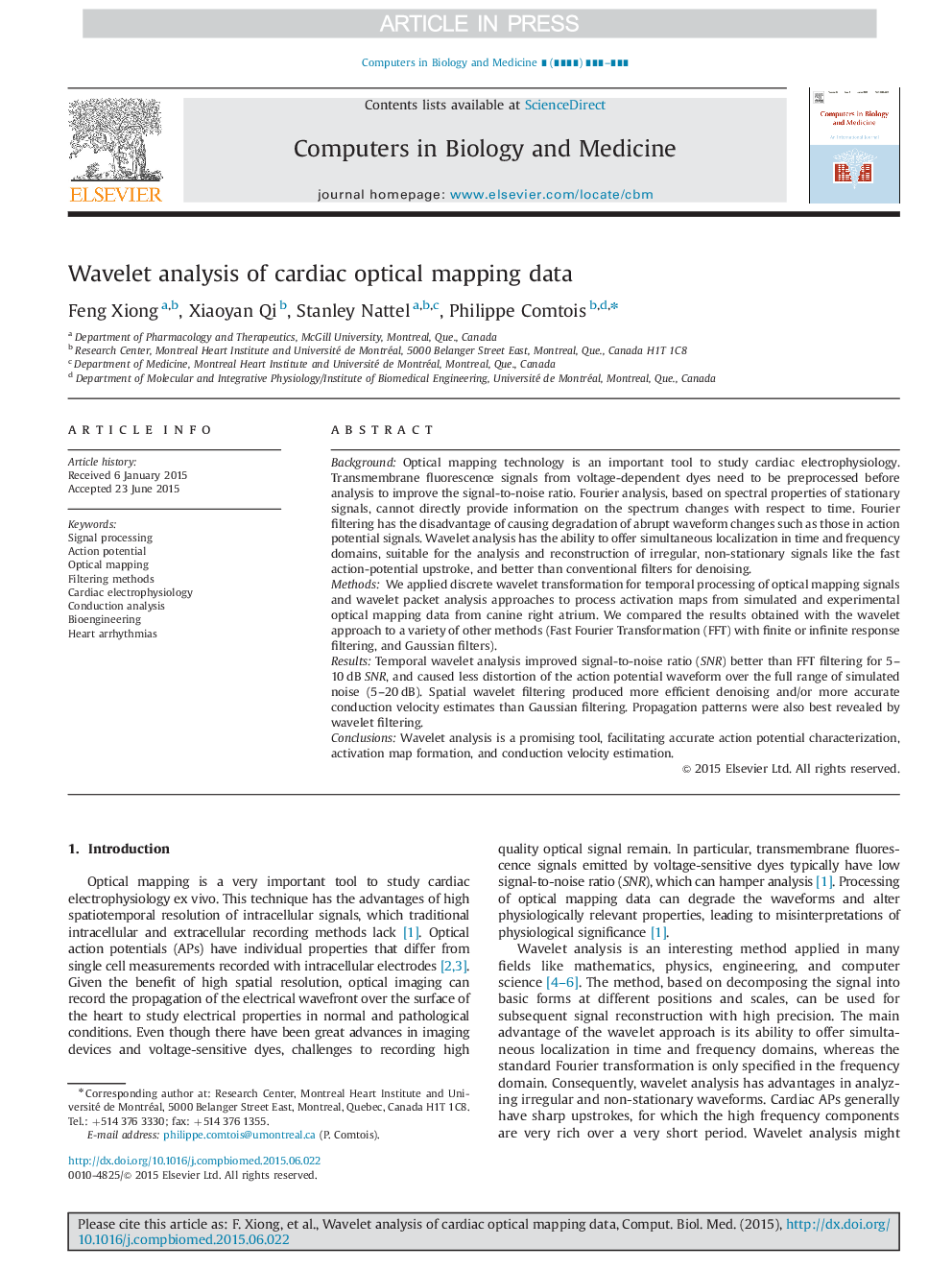| Article ID | Journal | Published Year | Pages | File Type |
|---|---|---|---|---|
| 6921154 | Computers in Biology and Medicine | 2015 | 13 Pages |
Abstract
We applied discrete wavelet transformation for temporal processing of optical mapping signals and wavelet packet analysis approaches to process activation maps from simulated and experimental optical mapping data from canine right atrium. We compared the results obtained with the wavelet approach to a variety of other methods (Fast Fourier Transformation (FFT) with finite or infinite response filtering, and Gaussian filters).Results: Temporal wavelet analysis improved signal-to-noise ratio (SNR) better than FFT filtering for 5-10Â dB SNR, and caused less distortion of the action potential waveform over the full range of simulated noise (5-20Â dB). Spatial wavelet filtering produced more efficient denoising and/or more accurate conduction velocity estimates than Gaussian filtering. Propagation patterns were also best revealed by wavelet filtering.Conclusions: Wavelet analysis is a promising tool, facilitating accurate action potential characterization, activation map formation, and conduction velocity estimation.
Keywords
Related Topics
Physical Sciences and Engineering
Computer Science
Computer Science Applications
Authors
Feng Xiong, Xiaoyan Qi, Stanley Nattel, Philippe Comtois,
